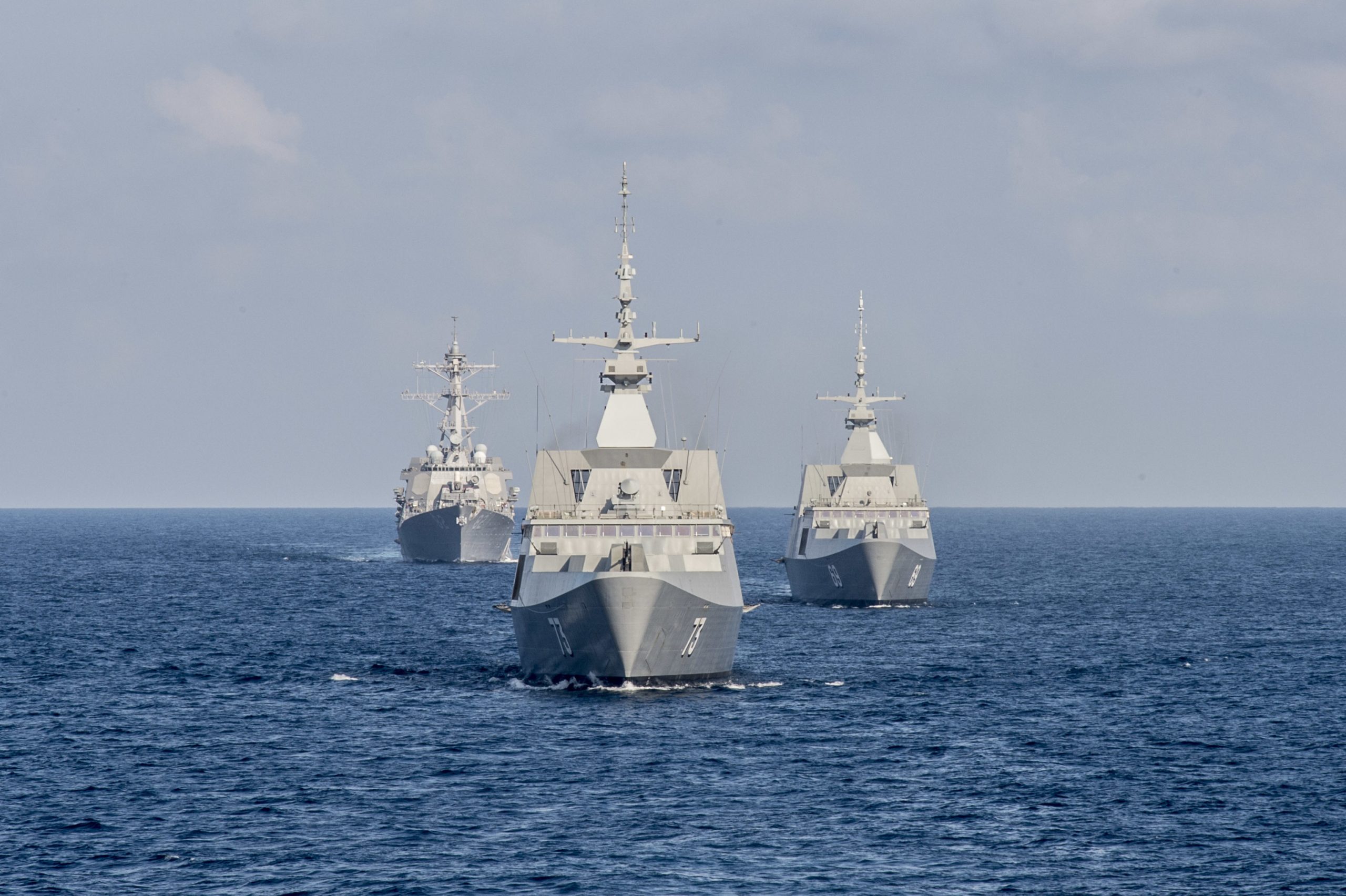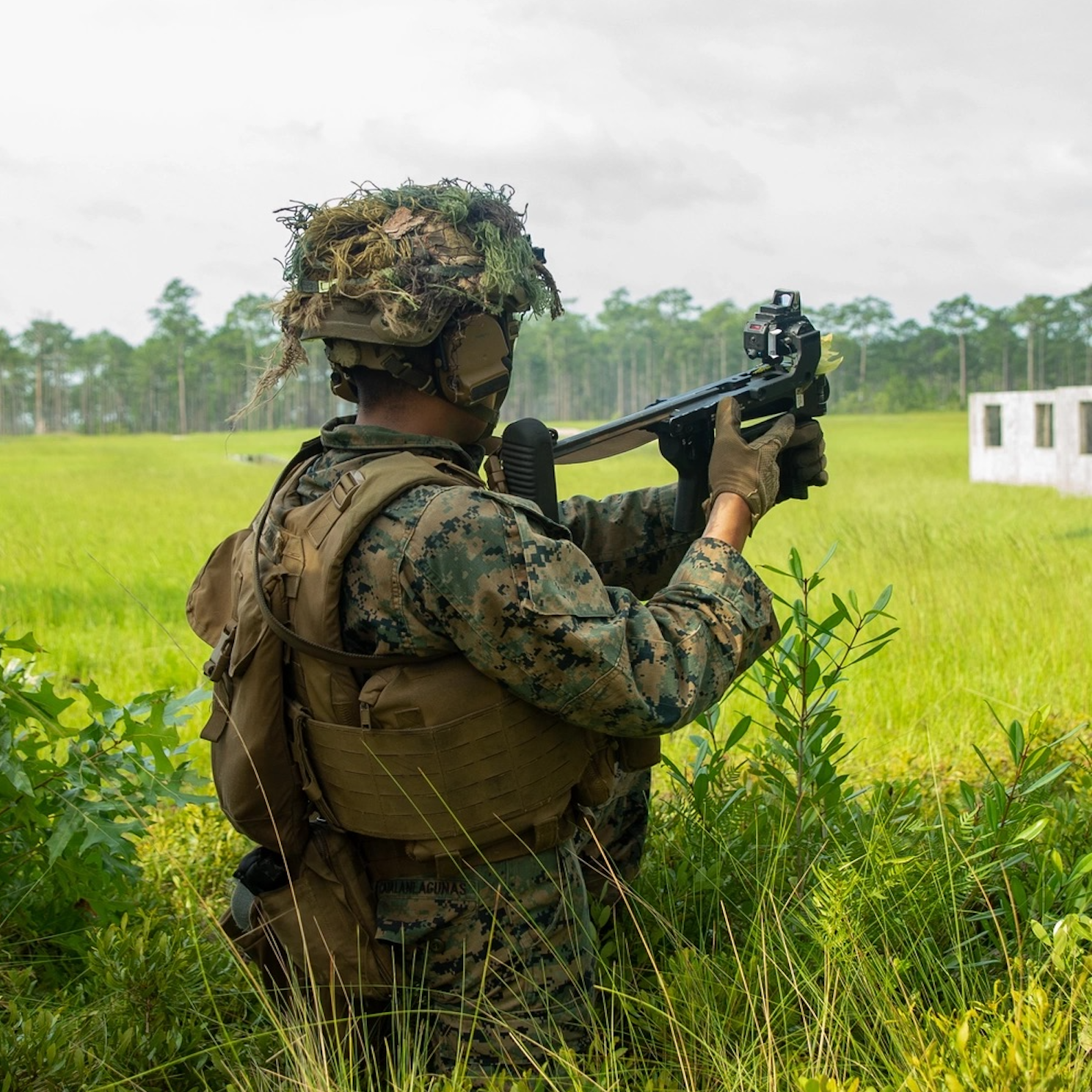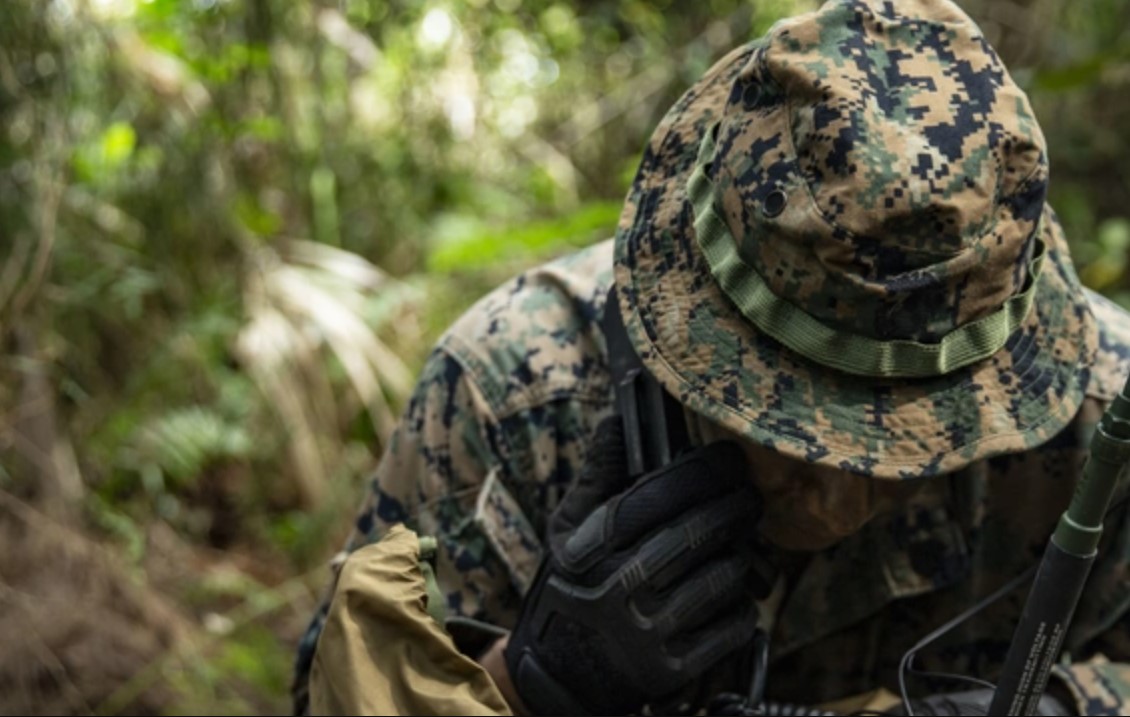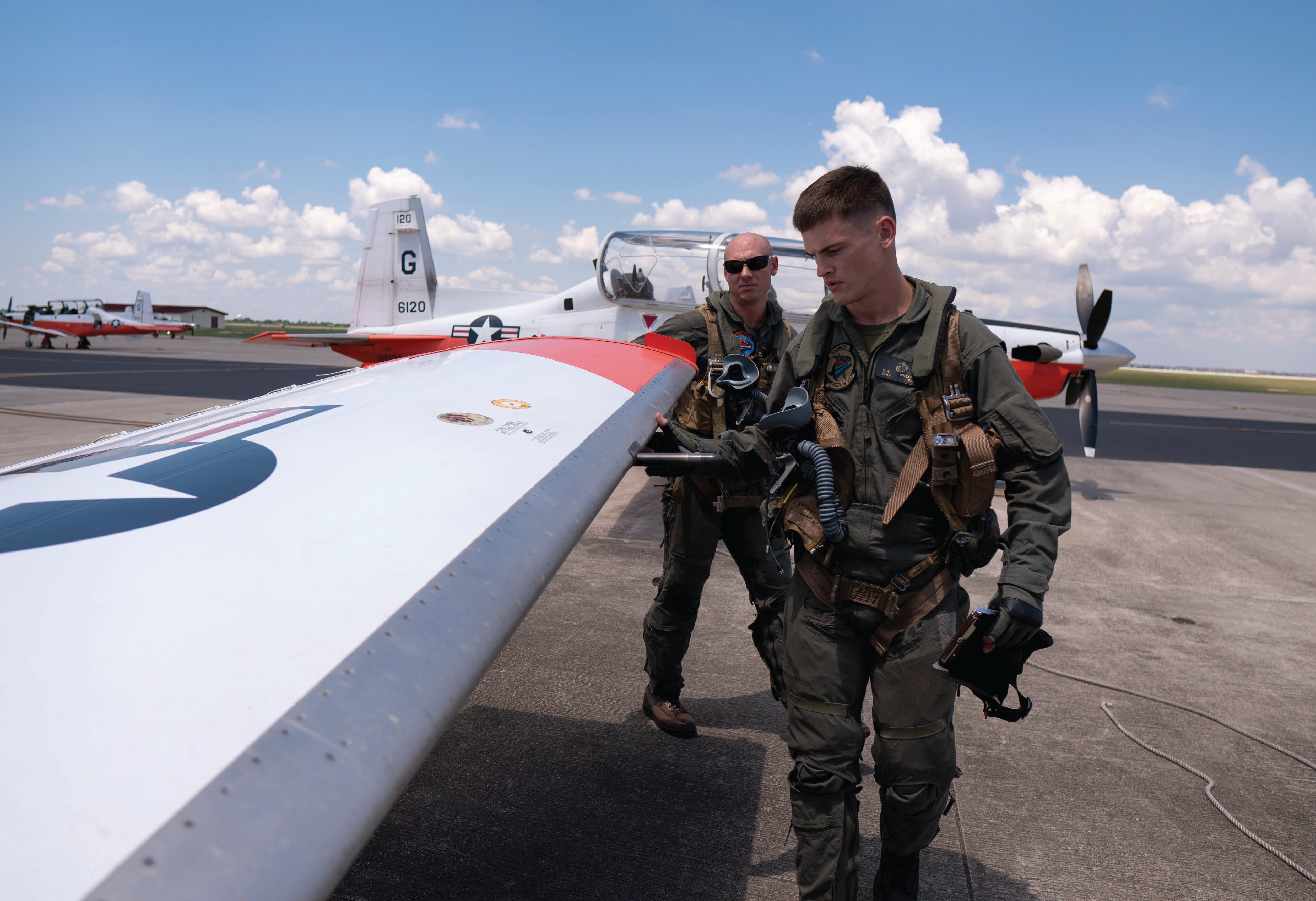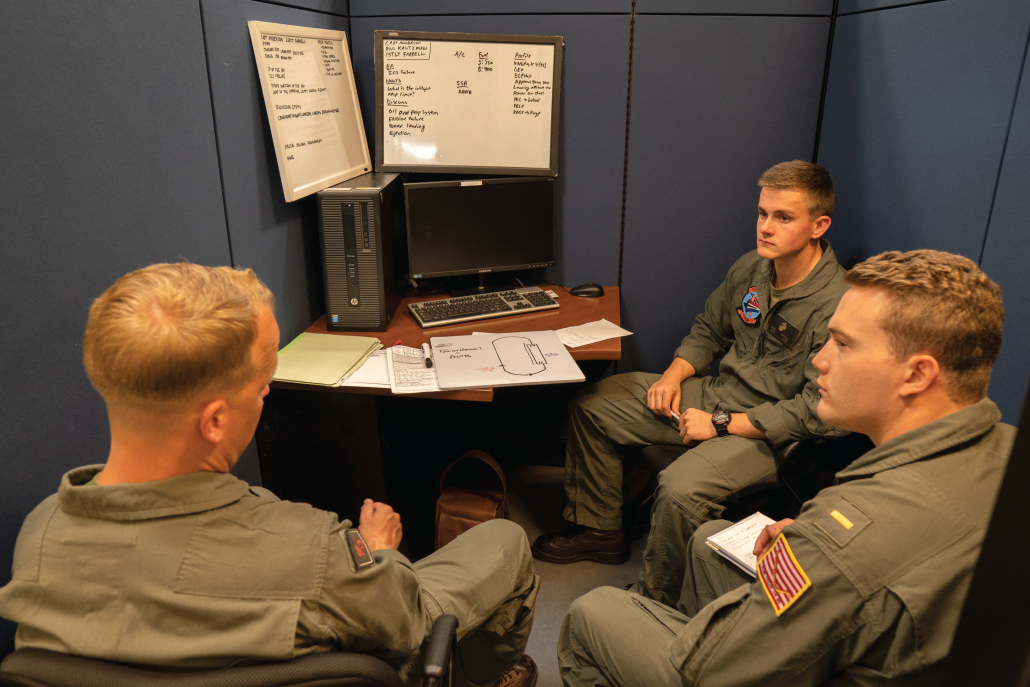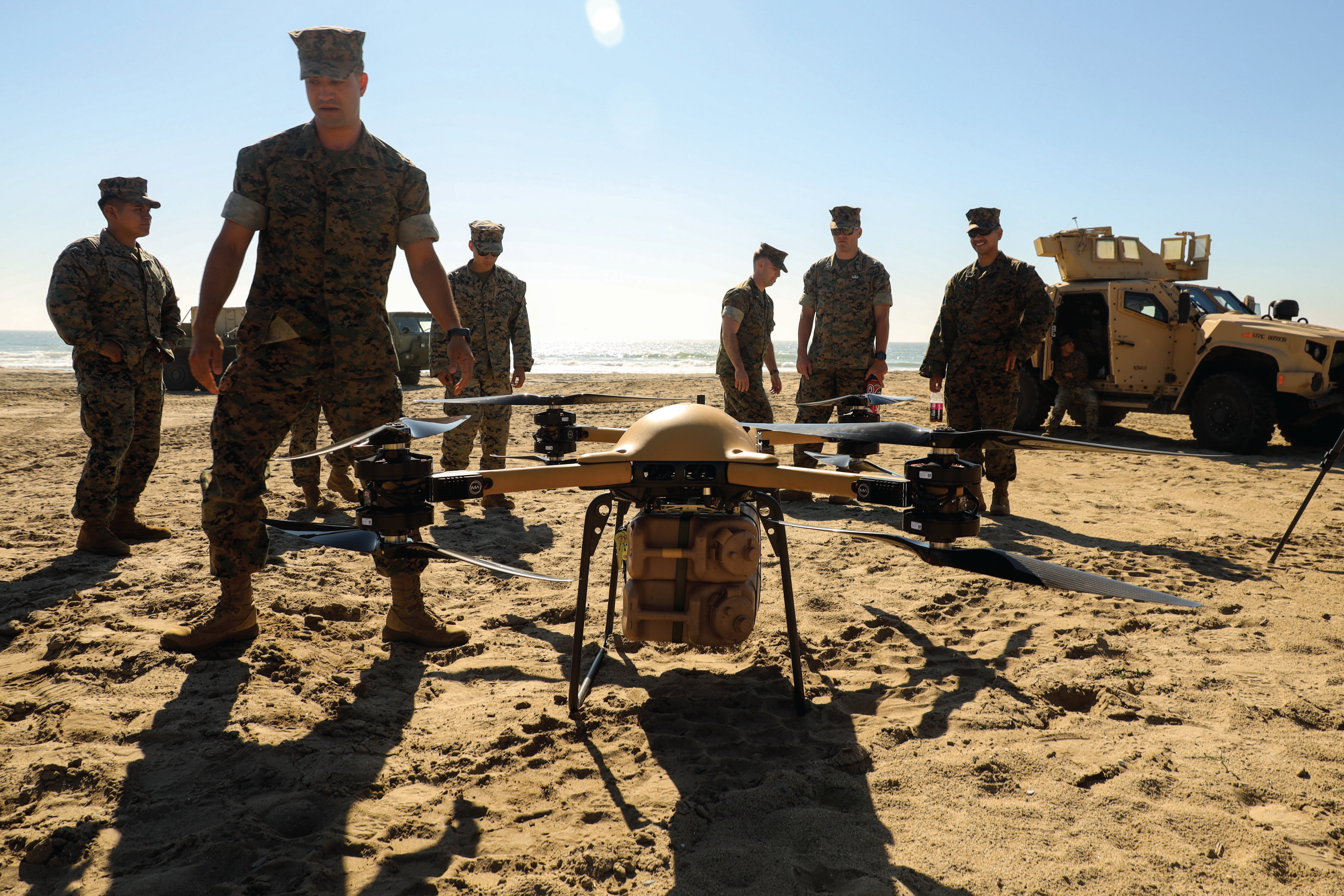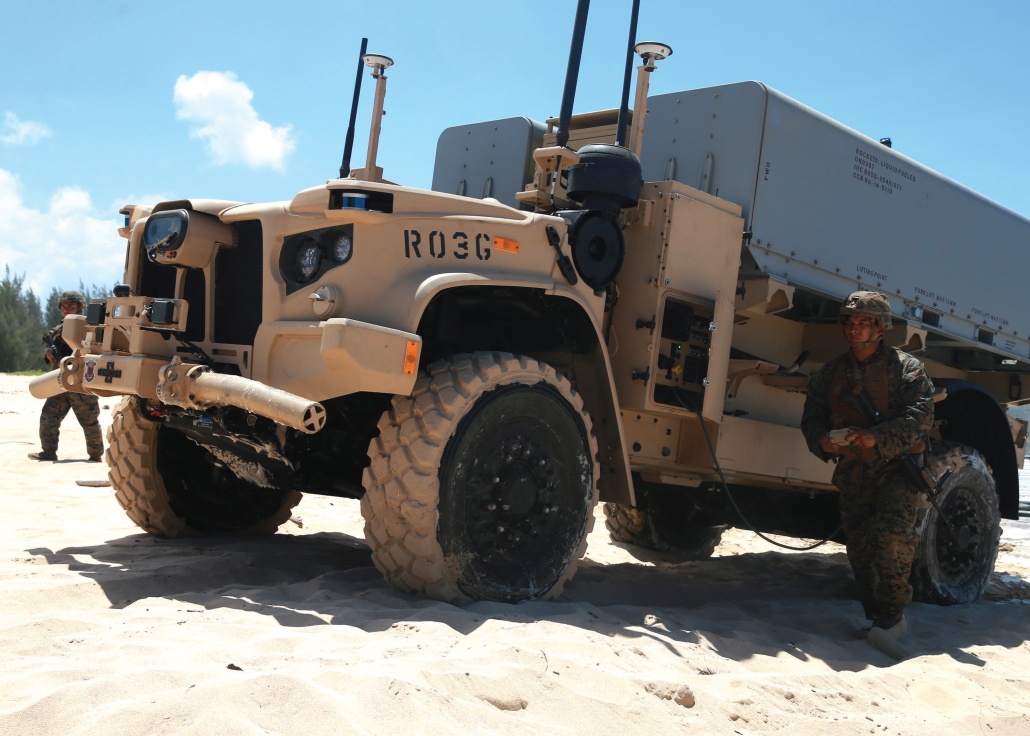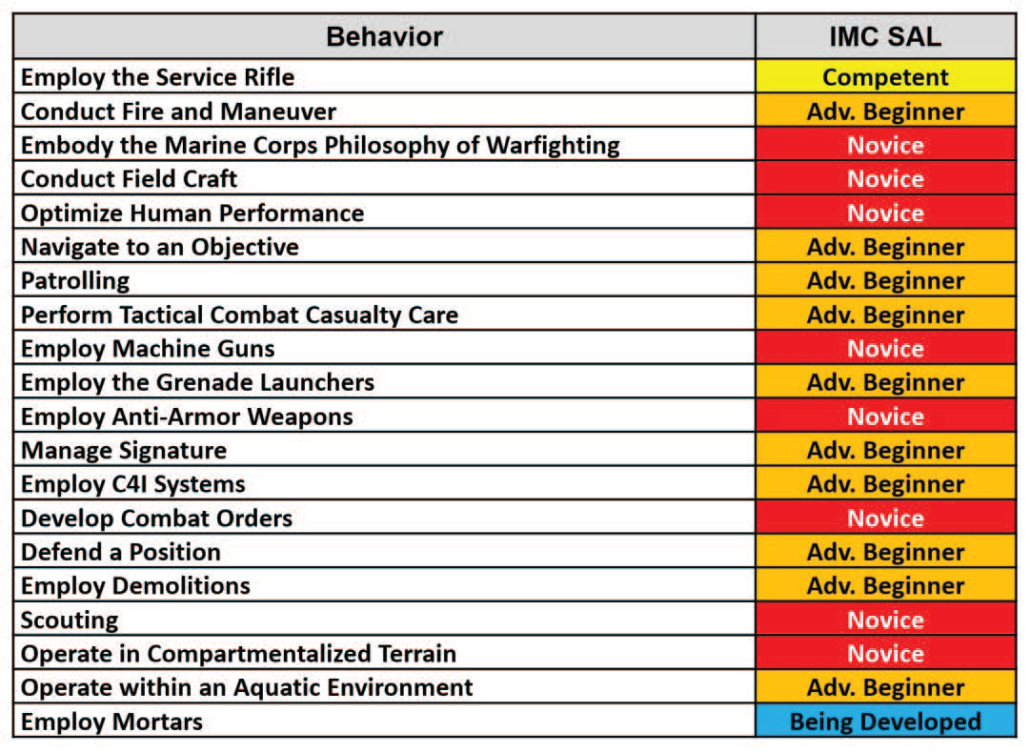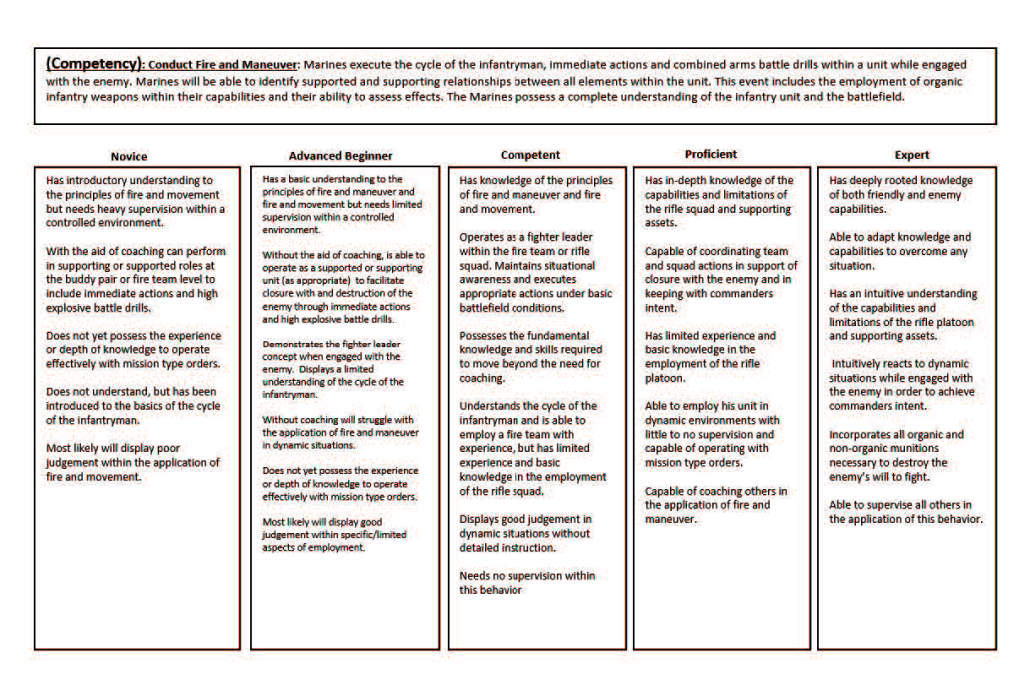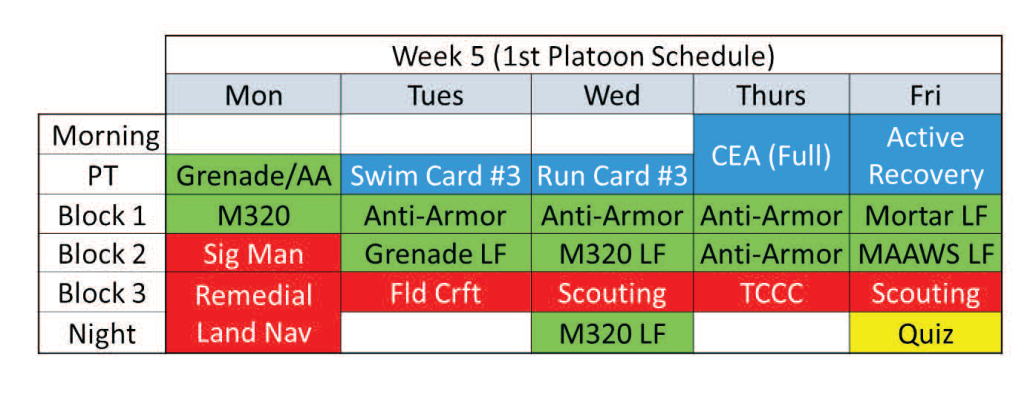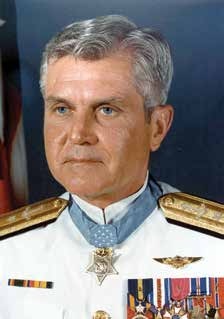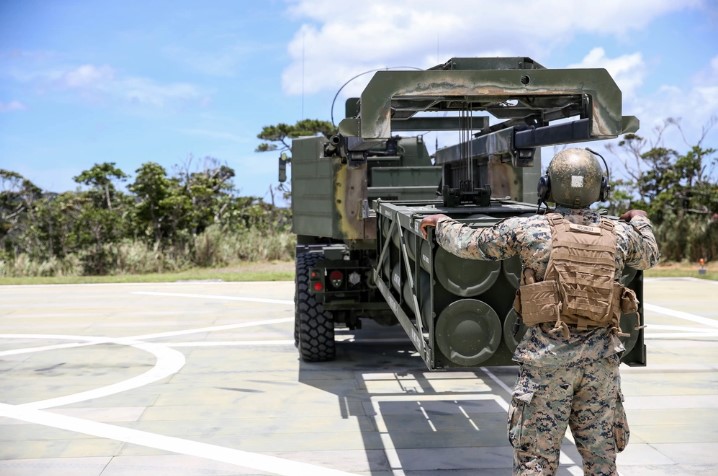The Taiwan crisis of 2027
>MajGen Maxwell currently serves as the Commander, Marine Corps Installations Command, Commanding General, Marine Corps National Capital Region Command, and Assistant Deputy Commandant, Installations and Logistics (Facilities). He most recently served as the Vice Director for Logistics on the Joint Staff. He previously served as the Assistant Deputy Commandant, Installations and Logistics (Plans, Policies, and Strategic Mobility), Commanding General, 2nd MLG, and Combined Joint Director of Logistics for the NATO Resolute Support Mission in Afghanistan.
Force Design 2030 and Installations and Logistics 2030 describe evolving missions and new capability requirements driven by a changing operating environment. Installations and Logistics 2030 is explicit about challenges associated with installations in contested environments and makes the following key points:
- To posture ourselves against the threat of peer and near-peer competitors, we need to rethink our view of Marine Corps installations.
- Our installations must be able to provide the full range of infrastructure and trained personnel required by the future force.
- Our installations must enable training, force readiness, experimentation, mobilization, and deployment while also improving quality of life for Marines, their families, and the civilian workforce.
- Smart, resilient, networked installations will provide stand-in forces with enhanced capabilities to recover quickly from attack, persist in contested spaces, and sustain distributed formations.
- We must ensure force protection efforts enable continuity of operations, protection, and safety of our families, and our forces to meet operational requirements.
The following vignette explores the contours of the changing operating environment and the associated implications for our installation through a fictional account of a security crisis occurring in 2027. While longer than most articles, a vignette is the most efficient way to animate the guidance in Force Design 2030 and Installations and Logistics 2030 while also illuminating the many challenges and opportunities associated with making our installations ready.
The Taiwan Crisis of 2027 System Attack–Systemic Defeat
Cloudy, with late afternoon rain was the forecast as Col Kay Smith headed up the gentle rise skirting the Okinawa Expressway toward Taiyo Golf Course for an early morning tee time with Col John Harmon and Col Steve White. As on most Saturday mornings in Okinawa, the plan for Kay was to get her mind focused on having a good round of golf after a week of non-stop mini-crises in her job as the Deputy Commander of Marine Corps Installations Pacific, but today there was something else on her mind: the rising tensions between China and Taiwan had serious implications for the operations and safety of the bases and stations under her command. Eighteen holes with Harmon, the III MEF G-3, and White, the Commanding Officer of 12th Marine Littoral Regiment, offered an opportunity to discuss her concerns with respected friends and colleagues. She seldom saw White, but she looked forward to catching up since they had known each other since The Basic School.
Driving into the parking lot afforded a glimpse of the verdant dark green course, having benefited from the above-average rainfall of the past few months. Unsurprisingly, John and Steve were running a little late, so Kay signed in and started some warm-up swings. After some additional stretches and a brief chat with a friendly groundskeeper, John came hustling over with Steve in trail.
“Hey, sorry we’re late. Let’s get going or we’ll miss our tee time,” said John.
“Right,” Kay said with a wry smile as she glanced at her watch. “Let’s get to it.”
By the 9th hole, the trio had settled into the flow of the game, and Kay ventured some shop talk.
“So, guys, the Chinese seem to be stepping up their Taiwan torment; more aircraft intrusions and more saber rattling. The G-6 says cyber intrusions are way above average. I think we should be stepping up preparations. I know we’re reviewing our base and station readiness.” John and Steve cocked their heads and looked at each other.
“There she goes again, always the professional,” Steve quipped, having known Kay for 23 years.
Niceties dispensed with, John took on a serious tone and said, “Yes Kay, you’re right to be concerned. Indications and Warnings are tipping into the red; we could be in for some unpleasantness in the coming months.”
“We’re ready,” Steve added. “The regiment is in good shape, and we’ve got several elements doing reconnaissance/counter reconnaissance in the lower Ryukyus and northern Luzon. We’ve actually detected some atypical PLAN submarine activity well east of Taiwan. But I’m not sure I get it Kay, what’re you worried about; our bases and stations aren’t going anywhere.”
“That’s precisely why I’m so concerned,” Kay responded. “It’s much easier to target a fixed installation than a low-signature distributed force. Would the PLA be more inclined to use expensive missiles on large, fixed bases or a small, hard-to-target, mobile unit? We’re sitting ducks.”
Somehow that game flow had evaporated. “OK,” John offered, “let’s call it at nine and talk about this over some yakisoba and a Sakura.”
At the table, John picked up where they left off. “OK, let’s remember where we are, so keep it unclass, but let’s think this through a bit. Kay, you started this, so what’s bothering you most?”
“Well, starting at the top, strategically, it just doesn’t make sense to me that we’re treating our bases and stations like we did when we UDP’d here as lieutenants. The threat’s very different now. We’re in the same arc of fires as our deployed operational units. That’s a big difference, right?”
“An attack here would be really escalatory, and might bring Japan in as an active combatant,” Steve opined.
“Remember Putin?” John interjected. “That insanity was just five years ago. It’s hard to predict an autocrat’s decision calculus,” he continued, looking ever more serious. “Kay, tell me what has been done to improve the posture of our installations as of late.”
Looking askance, Steve muttered, “But look where that got Putin: six feet under. Maybe Xi learned something.”
Kay had hoped the discussion would get to this point. “We’ve done a lot, but so much still needs to be done. We’ve barely moved the needle with Headquarters Marine Corps on resources. I think it’s important that we’re now tied into the theater missile defense early warning system and we can send warnings out to all smartphones if the threat dictates. That’s critical for Marines, civilians, and their families. Unfortunately, we’ve still not gotten the mobile cell towers we requested, in part because we’re still working on spectrum access with the Japanese. We need to keep pushing this. Steve, your folks might find them of use tactically, if we go Corregidor.”
Range and capability analysis of People’s Liberation Army Air and Rocket Forces. (Photo provided by author.)Steve chuckled while John’s arched eyebrows conveyed some skepticism over the World War II analogy, but his demeanor was now quite serious.
“And to be fair,” she continued, “there have been some other notable improvements over the last five years, and not just in IT upgrades. After pushing the issue for a couple of years, all our Installation Marines have a T/O [table of organization] weapon assigned and do annual FAM [familiarization] fire at a minimum. We have also developed healthy habitual relationships with elements of MARFORRES. Using reservists to fill holes created by our reduced reliance on FAP [Fleet Assistance Program] billets, and we now have the ability to fill vacancies with individual augments for the remaining FAP personnel when they get pulled during a crisis. Also, while there are IT and sensor elements associated with Global Logistics Awareness, hopefully, you’re seeing a difference in the responsiveness of logistics to operational requirements. The biggest deal has been the change in mindset. Logisticians are no longer waiting to be told the requirement, they are anticipating and planning for future requirements by integrating logistics into operational planning. The old way just won’t cut it given how distributed we are nowadays—and it also helps Installations by improving our situational awareness on LOGCOM [Logistics Command] and FMF logistics support requirements.
“OK,” John said, “balanced argument noted Kay, but give us the wavetops of today’s challenges,” the golf game already a distant memory. “What else?”
“Let me do it in terms you guys might best understand: the seven warfighting functions—it’s still seven right? We haven’t added yet another one recently, have we?” Kay jested, trying to lighten the mood she had precipitated, if only just a tad.
Kay opened a firehose of pent-up frustration. “Let’s start with command and control. John, whether you’re in Guam or here in Okinawa, you obviously understand the importance of your operations center. It needs to work 24/7 regardless of weather or enemy action. You know that, but did you know the communications grid that underpins it is brittle and lacks adequate capacity? You know our computers are old and slow; you see them every day, and you might guess that routers and servers need to be upgraded, but you might not think about the cables running down the streets and in the walls of our facilities. They are from a different era.”
“I’ve been told you might need to actually fight the MEF from your garrison facilities given the ranges of our latest missiles—and the PLA’s. The bandwidth required to support the surveillance, tracking, and targeting of enemy assets is growing constantly. Our IT pipes are strained passing PowerPoint slide decks. So much for full-motion video and passing target data back to CONUS! And it gets better; the power grid that runs the communications grid is even less resilient. Much of our communications grid is buried, but most of our power grid is overhead. We lose power with every hurricane or typhoon. What will it be like if the PLA comes knocking? Steve, you’ve at least got your tactical communications. That’ll work locally, but what if space is denied? A redundant underwater fiber line might be essential for off-island comms.”
“Every Marine loves to shoot stuff—fires is a perennial investment favorite—so you’d think we’d be good to go, right? Well, not exactly. First, Steve, you understand the limitations we have with ranges. Individual and crew-served weapons aren’t too bad, although we probably don’t shoot enough, the big challenges are the limited areas we have to do live fire and maneuver and where we can shoot artillery and missiles. We’re still waiting on funding to build virtual training ranges. Admittedly, a big part of the problem is a posture that mal-positions one-third of our operating forces for training, but we’ll save that one for another day.”
“We need to be able to simulate the entire kill chain for our anti-ship missiles, and we’re just not there yet. The sim center is still just a POM30 unfunded deficiency,” Steve chimed in. “Kay, don’t forget ranges for our loitering munitions. We can do some training at Fuji and Tinian, but that’s it, and since the smaller loitering munitions are integral to squad, platoon, and company operations, we need more reps and sets.”
“Force protection—wow, where to begin?” Kay said. “Of all the priorities in my job jar, this one worries me the most. Talk about multi-domain; we’ve got threats coming from every direction: cyber, drones, SCADA attacks, ubiquitous sensing, insider threats, CBRNE—heck we even have space-based and sub-orbital challenges, plus the usual concerns for hypersonic cruise missile and ballistic missile attack. We just haven’t adapted fast enough to have answers to these threats. From my time in P&R [Programs and Resources], I know there hasn’t been the trade space given our constrained budget topline and we had to get the basic new warfighting capabilities fielded.”
“Damn right,” Steve interjected. “We wouldn’t have been able to provide the sensing and fires to the Joint Force that we can now.”
“I’m with you,” Kay continued, “but now we need to think like the Chinese. This is a warfighting system we’re talking about, a system that doesn’t work without protection, sustainment, and installations that can operate in a contested environment. The PLA doesn’t think in terms of our stovepipes, they see a system and look for the weak link in the chain, and yours truly is holding the weakest link. I feel a disturbance in the Force.”
John had to say something at this point.
“Kay, come on. You SAW [School of Advanced Warfighting] Jedi always love those Star Wars references, but maybe you’re being just a bit too dramatic. We can’t afford to do everything.”
“Maybe … maybe,” Kay replied, “but when a lone Chinese SOF operator drops his backpack and releases ten loitering munitions that put holes in six JSF on the flightline, we’ll see how dramatic things can really get. Anyway, that’s a good segue to information and intelligence challenges. Both of these functions have increased steady-state requirements far beyond what they were when we were lieutenants. In competition, especially here in the Pacific, we’re in the fight every day. We need to have 24/7 intel on below-the-threshold threats, and we all read the CHINFO [Chief of Information] media summary every morning. There’s a constant back and forth as we, and our allies and partners, try to expose Chinese bad behavior and counter their disinformation campaign.”
“From my standpoint, we’ve had to band-aid our communications grid, which wasn’t built for the bandwidth and security requirements associated with these new demands. I mean, even battalions and regiments need PED [processing, exploitation, dissemination] facilities and these things often run 24/7, which means 24/7 chow hall hours and IT support. Security of these facilities is an issue as well.”
“You’re not being overdramatic in the least about this point, Kay,” Steve said nodding. “We were running an MQ-9 mission last week and we had some comm problems. We had to call the Enterprise Help Desk, the same service an action officer gets sitting at a desk building slides. I couldn’t believe it. We had to scrub the mission.”
“OK, well my soliloquy is almost over; just two more functions,” Kay said, picking up where she left off. John rolled his eyes.
“Maybe more of a diatribe than a soliloquy Kay,” he said, “but I like your passion. I get where you’re coming from. We need to have a conversation with the CG.”
“So, logistics is still logistics, always key, but Steve you mentioned loitering munitions. We need some additional funding to get the ammo storage facilities up to speed to allow us to store the munitions and their batteries in adjacent facilities, and our NMESIS missile systems would benefit from humidity-controlled storage. But the bigger picture, I’m concerned we could actually be like Corregidor in World War II. We’re at the end of a tenuous line of communications. The PLAN might decide to interfere with them with actions that drive up shipping insurance costs, and they could even get more aggressive and actively interdict shipping to Okinawa. We can’t prepare for everything of course, but we should at least have some extra stores on hand to ensure we have enough fuel, food, and ammo to sustain us should the Chinese decide to cut us off. John, do you agree?”
“I do, as long as we don’t get too crazy. I think I’m going to name the MEF CP Malinta,” he said with a little less sarcasm than his previous quip about World War II analogies.
Kay continued, “There’s also the potential for huge expenditure rates of munitions and the possibility for substantial combat attrition. We need to have a distributed and resilient stockpile of munitions that our operating forces can access, both at home base and when deployed with allies and partners in their territory. Unfortunately, our PGMs [precision-guided munitions] are located in known Navy ammo supply points. We’ve just not been able to get the resources to do distributed prepositioning, which, ironically, is substantially less costly than the old maritime prepositioning approach. I guess ships are just more interesting than warehouses, which is unfortunate because the relevant combat power of our new missiles is on a par with previous configurations and doesn’t require ships, connectors, escorts, and vehicles—all without the delay of RSO&I [reception, staging, onward movement, and integration]. Old paradigms die hard, I get it, but we’ve got to get folks to understand the increased power density of new weapons systems and their amazingly low cost per strike mile … but I digress.”
“Back to the need for reconstitution. We haven’t had to worry about this for decades; it’s just not in our psyche to increase planning factors to account for the kind of expenditure rates and attrition we’re likely to face. We need to have more robust facilities to accommodate repair and refit. This will need to be a long-haul effort to change our cultural proclivities. Finally, I promise, we come to maneuver.”
“Yup, got it,” said Steve.
“Yea, me too, got it, maneuver is key,” John reiterated.
“OK, sure but what about installations?” Kay replied.
“Good grief,” said John. “You’re not going to try and sell us on mobile installations are you?”
“Of course not,” said Kay, “but have you considered that installations, at the very least, provide a base for maneuver? If we were not postured across the first and second island chains and you moved your regiment tactically to the same geography currently occupied by our bases and stations, would you say we have conducted operational maneuver in relation to our adversary? I would say yes!”
“Hmm, hadn’t really thought about it in those terms,” said Steve.
“As we increase our inventories of PGMs at all echelons and their ranges increase, we will increasingly maneuver not to assault, but to gain positional advantage for indirect and long-range precision fires. Our bases and stations occupy terrain in the mutual weapons engagement zone of our forces and those of our adversaries. So, it’s not inconceivable we could be firebases for these weapon systems. It might not be our primary COA [course of action], but if we’re cut off, it might be our only option to take the fight to the PLA. Of course, that moves us up the PLA’s list of target priorities, which gets me to resilience.”
“Obviously, we can’t afford to harden everything, but we need to think deliberately about how to maintain continuity of operations for all of our critical infrastructure. Our critical infrastructure must be resilient and some assets may even need to be hardened for weapons effects vice just resilience.”
“Like in a tunnel or underground,” John winked. He was ready for this one. “The CG has been talking about this issue at nearly every weekly staff meeting. He understands it’s an issue that needs attention. He gets it.”
“Awesome,” Kay said, “That’s what we get for having a loggie as MEF commander. Only the second time, if I recall correctly!” She continued. “Resilience is a term of art in the installations community, but I like to keep things simple. The Air Force has a succinct definition: the capability of an installation to sustain the projection of combat power by protecting against, responding to, and recovering from deliberate, accidental, or naturally occurring events. I think that about covers it.”
“The CG is really worried about fuel,” John said.
“That makes sense; it’s a critical vulnerability. Of course, it’s the vulnerability of the storage tanks, but perhaps the most problematic is the fuel handling infrastructure, especially for aviation. It’s a tough nut,” Kay affirmed.
Two Months Later
Two months after their golf outing, and five years to the day since Xi Jinping was proclaimed “ruler for life,” the onslaught began, not with a bang, but with an incremental, yet unmistakable escalation across multiple fronts.
It appears the Chinese paid as much attention to our doctrine, concepts, and force posture as we had. For over a month, they gathered an amphibious armada that tripped indications and warning systems, so we knew something was coming. We assumed it was a massive amphibious assault on Taiwan, a Chinese version of D-Day, but to our surprise, that did not happen. Instead, they began a graduated, slowly expanding interdiction of Taiwan’s connections to the outside world. Undersea fiber optic cables stopped working, then space-based communications became unreliable, maritime militia significantly ramped up interference in commercial fishing operations throughout the South China Sea, and a northbound container ship sank suspiciously in moderately foul weather.
One month into China’s campaign of intimidation, their playbook of malign activities appeared limitless. It was at this point that one of Kay’s worst fears was realized. Through an intense information campaign, China made clear that any interference in their Taiwan campaign by the United States would result in devastating attacks upon U.S. bases and stations. They explicitly called out Camp Humphries in South Korea, Kadena AFB, Marine Corps installations on Okinawa, and Anderson AFB and Camp Blaz on Guam. The warnings were very precise and stated that any damage to property or personnel other than those named U.S. installations would be unintended collateral damage. China emphasized the attacks would be precision strikes, focused solely on U.S. property and personnel.
The Chinese thus presented our President with a dilemma—support Taiwan’s defense or risk attacks on tens of thousands of military and civilian personnel and their dependents. The President was in a difficult place. If he took overt military action against the Chinese anaconda plan to constrict Taiwan’s line of communications, the United States would be the first party to initiate combat, and at the same time, potentially thousands of U.S. citizens would lose their lives. Xi apparently was taking notes in 2022 when Putin catalyzed Western resolve with a massive, violent military assault on Ukraine. It was a black-and-white situation, whereas China’s actions were all shades of gray.
Early on, when Chinese preparations were accelerating, Marine Stand-in Forces had been deployed from Okinawa and Guam to northern Luzon and Miyakojima, Kumejima, and Tokashiki Islands to the west and south of Okinawa. These distributed Stand-in Forces provided surveillance and sea denial fires options for the Luzon and Miyako Straits while providing enhanced situational awareness to the Joint Force. Given the gradualist approach adopted by China, having a thicker and more diverse range of sensors proved to be especially important to national command authorities given the large uncertainties associated with China’s chosen approach—a massive all-out attack with missiles and an amphibious assault would have provided a more simplified, black and white decision calculus for U.S. response. The options for ISR, cyber ops, information ops, targeting, and strike that Stand-in Forces add to the Joint Force’s expanded decision-maker options to allow for a measured and agile response, able to scale commensurate with China’s incrementalism.
One Month Later
“BREAKING NEWS—CHINA REPEATS THREATS TO U.S. PACIFIC BASES,” read the TV banner in Marine Corps Installations Pacific’s crisis action center adjacent to the Joint Force Maritime Component Commander Forward/III MEF COC.
It did not help Kay’s mood that she had been warning about such an eventuality. Told you so was not a helpful attitude, and she knew it. Now was the time to do the best with what was at hand.
“OpsO, I need to see our most recent SITREP,” she requested.
Kay ran through a mental checklist of installation functions to ensure all necessary measures had been taken given China’s demonstrated propensity to avoid surfaces and look for gaps that could be exploited. It looked like installations were truly a gap in PLA eyes.
Law enforcement personnel were working extra shifts and perimeter security was stepped up. Fortunately, the recently fielded AI-enabled drones substantially reduced the manpower required for conducting patrols, but there were still concerns over operatives able to deploy electronic warfare in support of cyber operations, as well as jamming and physical damage to communications infrastructure. The 2024 decision to issue installation Marines weapons was proving to be a wise move, enabling them to provide additional support to perimeter security. Hard to believe we had become so assured in our security we had forward-stationed Marines without weapons or weapons training.
Thankfully, the reservist rotational augments were fully incorporated into bases and stations—yet another manpower improvement over the last few years. Kay made a note to request a surge to get the next rotation in early and to encourage as many currently assigned personnel as possible to extend.
Tenant commands were operating around the clock, so there was an increased demand for chow halls, IT support, and maintenance. Kay made a mental note to talk to John to see what MEF might be able to do to help with surveillance and security operations to allow Marines with specialized installation skills to support base surge ops.
Cpl Sanchez interrupted, “Ma’am, the MEF G-2 is on the phone.”
“OK, I’ll take it,” said Kay with some apprehension, as she had a good idea what Joe wanted. “Joe, how can I help you?” she asked.
“Kay, we’re getting crushed, we’ve got the majority of our tactical sensors deployed and we’re getting fire hosed with data, but the network is clobbered, our PED’sters can’t get their jobs done, and they say it’s not processing capacity, it’s a bandwidth problem.”
As Kay suspected, installations communications grid upgrades had been an unfunded deficiency for four years running. Base comm grids were largely still copper and simply lacked the capacity. Back in Virginia, she recalled having fiber run to her house by a commercial vendor years ago, providing one gigabyte per second upload and download speeds. Her house had more bandwidth than the MEF-sensitive compartmented information facility, which is crazy but true and not to mention electromagnetic pulse attack was not a big consideration when she decided to shift to fiber for her home—so there was that vulnerability to think about as well.
“Joe, sorry, we understand the problem. Tell you what, I’ll talk to our comms folks. Perhaps we can have them team with Comm Battalion to run some fiber to a tactical SATCOM link,” Kay offered. “I’ve already asked engineers to disperse their generators to ensure we have backup tactical power generation if needed.”
“Kay, OK I appreciate that, but you know space is going to be unreliable. Perhaps they could tie into a commercial fiber point of presence,” said Joe.
“Right, we’ll look into that as well,” Kay agreed. “I’ll let you know tomorrow where we are with the band-aid.”
Kay looked up to see Sanchez back at the hatch looking serious.
“Ma’am, we just got a message saying the next UDP battalion won’t deploy on time—some sketchy stuff going on in Pendleton, Twentynine Palms, and Lejeune.”
“Need some specifics Sanchez, like what?” asked Kay.
“Well, in addition to the interruptions in the Global Logistics Awareness systems you’re already aware of—like sensors dropping off and recurring network outages—there’s been a number of intrusions into our range control systems stateside, and it’s been affecting the training cycle. That ankle-biter stuff set the battalion back a few weeks, but now there’s been major disruptions in contract air operations—but that’s not the worst of it. Third Battalion 2d Marines was at Cherry Point forming up in the parking lot after the buses dropped them off and a quadcopter flew over; they’re thinking it might have dispensed anthrax. They’ve got to all be tested, and it’ll be a day or two before they can confirm what it was. I got a text from Sgt Mulvaney who’s a grunt in 3/2 Mar. He was looking forward to escaping the Lejeune heat since his barracks A/C was broken again, but now they’re back in barracks waiting on test results. Just lots extra friction regardless of whether it was an actual bio-attack or not.”
Kay turned back to the situation report and the logistics support section. Two dry store ships had been delayed due to maritime militia activities in the South China Sea and Naha Port authorities were reporting other delays as well. The commissaries would be out of fresh produce in a week, and there was only a two-week supply of baby formula. Fortunately, the base had gained funding for an additional two-month supply of MREs that could feed all tenants and dependents, but good luck feeding MREs to infants. Maybe we can frag a C-130 to make a run to the mainland for formula, putting a whole new meaning to the old term milk run, thought Kay in disbelief. How did we get to such a place?
At least the training ranges were in pretty good shape, but ammo levels were not what they should be. The arms room concept placed an increased requirement for ammo to qualify a wider number of Marines, whereas before only specialized MOSs qualified on crew-served and shoulder-fired rockets. It was unquestionably critical to have more Marines trained in more weapons platforms, but ammo allowances had still not increased to levels necessary to get everyone trained to standard.
Virtual and constructive training helped with training on artillery and missile systems, but the facility envisioned by Project Tripoli just had its groundbreaking last month. Despite MCICOM’s efforts, it was still taking five years to get new facility construction started and then there were the inevitable construction delays. At any rate, no reason to dwell on this now; it is what it is, she thought. There were more immediate concerns.
Two Weeks Later
There was now no question that China was all in on gaining control of Taiwan. Essential supplies were still arriving in Guam and Okinawa, but merchant ships were now organized into escorted convoys after the investigation of the lost container ship EVER GENTLE revealed ambiguous but highly suspicious indications that there had been a PLAN submarine in the area of the sinking.
Evacuation of dependents proceeded apace with charter flights leaving at regular intervals from Naha International Airport and Kadena Air Force Base. Once these flights were completed, the concerns over food and medical care for tenants would be substantially reduced, but it remained to be seen whether the departure of dependents would make the bases and stations more or less likely to be targeted. On the receiving end, Marine Corps Installations–West was busy with the influx of new families. It would have been good to have rehearsed this non-combatant evacuation operation beforehand to develop a playbook for how to secure quarters, guidelines for what could be taken, and more information to give the displaced about what to expect on the other end. Still unresolved was who would care for all the pets remaining behind.
Currently
To date, the Chinese have still not taken overt military operations and the United States has decided to work with the international community to impose economic sanctions on China while also increasing naval and air forces in between the first and second island chains.
Kay could only hope that sanctions worked. The evacuation of dependents from Japanese locations reduced the burden substantially, but that did not increase ammo levels or ensure that theater air and missile defenses would make much difference if China decided to go kinetic.
Maybe the installations would weather the storm. Kay could only hope because there was nothing else to be done; it would depend on the Chinese.
Epilogue
Can a fait accompli be slow and progressive? Does it have to be so sudden the opponent is unable to offer a timely response in hours or days?
With the benefit of hindsight, what appeared at the time to be a progressive ratcheting up of intimidating actions by the Chinese looks today more like a fait accompli given China’s studied exploitation of our vulnerabilities and the recognition that they had tailored a long-term campaign to gain control of Taiwan and then executed it to near perfection. America and its allies and partners did respond to Chinese provocations quickly but in a measured series of economic, information, diplomatic, and military actions, with varying levels of effectiveness. Yet today, China controls Taiwan’s apparatus of government and is working to consolidate total control over the island.
As an adversary with a mature Long-Range Precision Strike complex, the Chinese changed the battlespace in novel and unanticipated ways. The ability to create effects, without changing location, meant the Chinese could threaten to attack or conduct an attack at very low cost. By manipulating our Indications and Warnings, they were able to force us to react, executing flush plans, conducting a noncombatant evacuation operation, and focusing on internal housekeeping matters while they had none of the traditional logistical or temporal costs associated with moving into battle position.
Attack or threat of attack was fast and cheap for the Chinese, whereas we had to move large forces great distances, evacuate families, and implement ad hoc defensive measures to cover installation vulnerabilities. Also, their attack options had the benefit of being precise, thus allowing them to modulate collateral damage. Importantly, they could attack any target set within range of their munitions while we had perhaps overfocused on protecting tactical formations to the detriment of fixed installations.
The DOD rightly recognized the need to improve its abilities to target and attack PLA forces back in 2018, but this focus evolved into tunnel vision given resource constraints across the Department that forced budgets to focus only on the “top” priorities vice the Joint Force’s system priorities. Underinvestment in system enablers opened a seam the Chinese drove their missiles through. The Chinese viewed all U.S. assets within their weapons engagement zone as valid targets, and without the baggage of our cultural propensities, they were clear-eyed as to where the U.S. was most vulnerable and what targets would best achieve their political objectives.
The Chinese knew our democracy demanded the President pay close attention to public sentiment, and Taiwan did not resonate with the American polity as had Putin’s attack on Ukraine. This was not because Americans had a greater affinity for a European war. Rather, it was because of the way the Chinese had learned from Putin’s mistakes and adopted a gradualist approach that avoided bloodshed until the very end of their campaign. By then, it was too late to walk back the chain of events they had orchestrated.
China’s strategy leveraged American ambivalence by threatening to attack U.S. citizens and military personnel at U.S. bases and stations located within their desired sphere of influence, and the President decided to avoid escalation until U.S. non-combatants could be evacuated. Perhaps savvily, China chose not to interfere with the evacuation. They understood they were losing some of their leverage, but the vulnerability of U.S. installations left plenty of targets possessing both military and iconic value for them to threaten. In return, they gained more of their most valuable commodity: time.
It is clear now that posture matters greatly. Vulnerabilities are vulnerabilities, whether operating force or supporting establishment, especially in the eyes of an adversary who may understand political vulnerabilities better than the U.S. military, given they have the benefit of not being burdened by the U.S. military’s inclination to focus primarily on military outcomes.
The Joint Force and the Nation’s infrastructure and industrial base comprise a system that was perhaps better understood by previous generations. In World War I and World War II, key cities, bases, fortresses, and industries were early military objectives of both sides, but during the long interregnum of our military hegemony since then, we forgot. The Chinese had not.


